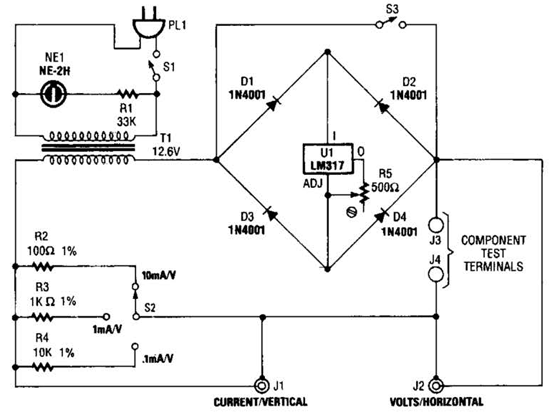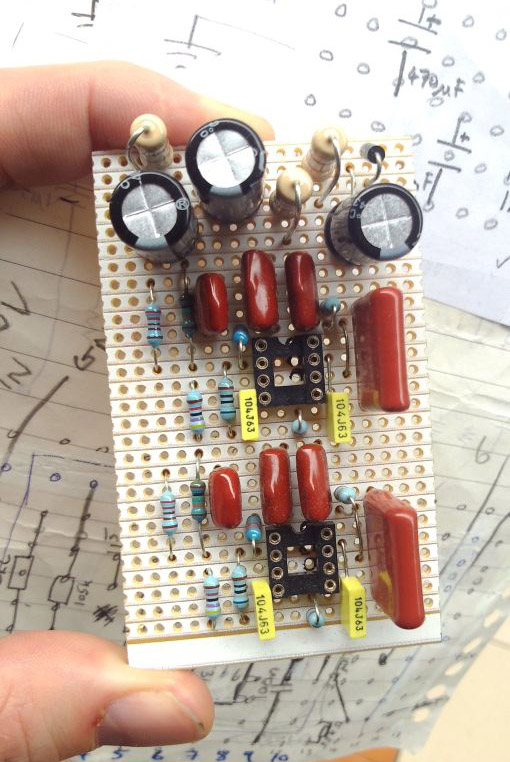Telephone Ringing
Telephone Ringing circuit Diagram. Even though cordless phones have invaded our homes and offices, you don’t always have them at hand, and as their ringtones are usually very much quieter than the old rotary-dial- type analogue phones, it can happen that you miss a call you’ve been waiting for while you’ve been going about your daily business.
Until quite recently, you could still find remote ringers that could be plugged into any standard phone socket in order to have an additional ringer, but it seems as if these accessories are currently being phased out as everyone is ‘going cordless’. So we decided to suggest something better, with this phone ring repeater that makes it possible to control any device connected to the AC power outlet using the ringtone available on any subscriber line, and naturally, with all the guarantees of safety and isolation that are of course rightly expected. So it’s capable of driving a ringer, or indeed even a high-powered sounder to alert you when you are in the garden, for example; but it is equally able to light a lamp for a ‘silent ring’ so as to avoid waking a sleeping baby or elderly person.
.
Circuit diagram :.
 Telephone Ring Repeater Circuit Diagram
Telephone Ring Repeater Circuit Diagram.
This circuit has been designed to be compatible with all phone systems the author is aware of and also to be totally stand-alone. What’s more, the circuit can be connected to the phone system without any danger though in some countries, it is forbidden to connect non-approved devices to the public switched telephone network (PSTN). Check local regulations in this respect.
In order to understand the principle of it, we just need to remember that the ringtone present on a phone installation is an alternating voltage, whose amplitude and frequency vary somewhat between countries, but always with comparable orders of magnitude except in the case of exchange systems used in large companies. However, when the line is quiescent or a call is in progress, it carries only a direct voltage. Capacitor C1 makes it possible to pick off just the AC ringing volt-age, which is then rectified by D2 and amplitude-limited by D1. The resulting DC voltage charges capacitor C2, which makes it possible to light LED D3 as well as the LED in the optocoupler IC1. This is no ordinary optocoupler, but is in fact an AC power zero-crossing detecting optotriac, which allows us to con-trol the chosen load while generating no, or less, interference, which would not be the case using a standard optotriac.
The output triac it contains is not powerful enough to drive a load directly connected to the mains, so it is used to drive the trigger of triac TRI1, which is a totally standard 400 V device, rated at x amps, where x is chosen to suit the maximum power of the load you want to control using this circuit. Resistors and capacitors R5 and C3 on the one hand, and R6 and C4 on the other help, serve to suppress the switching transients, which are already inherently low because of the AC zero-crossing switching provided by IC1.
Construction is not at all difficult, but does require a few precautions in choosing some of the components. First of all, capacitor C1 must be an MKT type, mylar or equivalent, with a 250 V operating voltage because of the relatively high amplitude of the ringing voltage. For safety reasons, it is essential that capacitors C3 and C4 are self-healing types intended for AC power use at 250 VAC. These capacitors are generally known as Class X or X2 capacitors.
As for the triac, it should have a 400 V operating voltage (but see below for users on 120 VAC power) and maximum current slightly greater than the maximum current drawn by the load being driven. As this will usually be a sounder or a common lamp, a 2 A type will usually be more than adequate in most situations. As the circuit can be expected to operate for short periods only, there is no need to mount the triac on a heatsink. One final important point: as the right hand part of the circuit is connected directly to AC power, it is vital to fit this inside a fully-insulated housing, for obvious safety reasons. Make sure you cannot touch any part when the circuit is in use.
The circuit should work at once and without any problems, but if you notice that D3 doesn’t light up fully, and hence incorrect or erratic triggering of the triac, because of too low a ringing voltage, all you need to put things to rights is reduce the value of resistor R1. The circuit as shown was dimensioned for operation from 230 VAC power. Readers on 120 VAC power should modify the following component values: R4 = 180 Ω; R5 = 220 Ω; TRI = 200 V model; IC1 = MOC3031. Option-ally, C3 and C4 may be rated at 120 VAC.



Comments
Post a Comment